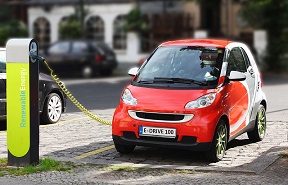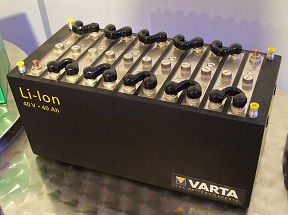Solid state batteries are going to provide a new boost to electric driving. They are in full development; but solid state battery-equipped cars will probably not hit the market before 2025. These batteries will have more capacity than lithium-ion batteries and charge faster. Cars equipped with them will have an up to 40% lower ecological footprint. But they also require more lithium.

The advent of the solid state battery
Above all, the rise of the electric car is due to the continuous improvement of the lithium-ion battery; in terms of energy density and cost. But most electric car producers already have their eyes on the solid state battery. This doesn’t contain any fluid components; it uses solid ceramic material and is safer because of that. It has more capacity and can cause the car’s weight to drop. Moreover, we can charge faster the solid state battery, and produce it at lower cost; the latter because we need less resources, among them the scarce metal cobalt.
These insights come to the fore as European parliamentarians and EU governments negotiate on a new battery guideline (link in Dutch). This should establish safety and recycling rules for batteries (and for the lithium contained in them). If the lithium used in new batteries should be mined sustainably, the solid state battery might have a 40 percent lower ecological footprint than the present lithium-ion batteries. According to research done by Minviro, commissioned by the European pressure group Transport & Environment (T&E). Although it might need almost 40% more lithium. T&E is of the opinion that this lithium should be produced responsibly, both in environmental and in social respect.

Advantages
For electric cars, safety is of the utmost importance. In the past, some batteries were overheated and burst into flames. Much work has since then been done in this area. Solid state batteries should perform even better, as their electrolyte is non-flammable. This will result in less elaborate safety measures; and then, energy density may increase even further.
The solid state battery has an advantage that appeals a lot to car manufacturers; they can charge faster. The Californian start-up QuantumScape for instance claims that their battery can charge up to 80% in a quarter of an hour, twice as fast as the present battery on a supercharger. Therefore, car makers scramble to come with the solid state battery as fast as possible. Chinese companies, Toyota and Volkswagen claim that they may be ready for this in 2025. Others are more cautious and put this event in ‘the second half of the decade’.
Solid state battery: the time frame
Of course, production costs are important. De sector holds that the solid state battery will ultimately be cheaper than the lithium-ion battery. It has a higher energy density and therefore requires less material. And it is safer as well. On top of that, there are more markets for this device than just automotive. The American company Zendure will, so they claim, be the first to market solid state batteries for domestic use. With them, people can temporarily store solar energy and use it later. The flexible battery has a capacity ranging from 6.4 kWh to 64 kWh. It will be equipped with a connection to the solar panels and a plug-in for charging the electric car.
Of course, enough lithium should come to the market to facilitate these developments. So far, mining extensions still are on the same track as future battery development projects. Although car manufacturers try to consolidate their future by long-term contracts. And by the end of the decade, we will also need to have enough recycling capacity. The present Ukrainian war puts a lot of pressure on fossil fuel markets – a good incentive to develop as fast as possible electric driving.
Interesting? Then also read:
Battery technology in fast development
Transport as a Service
Energy storage: the necessary supplement to sustainable energy sources
